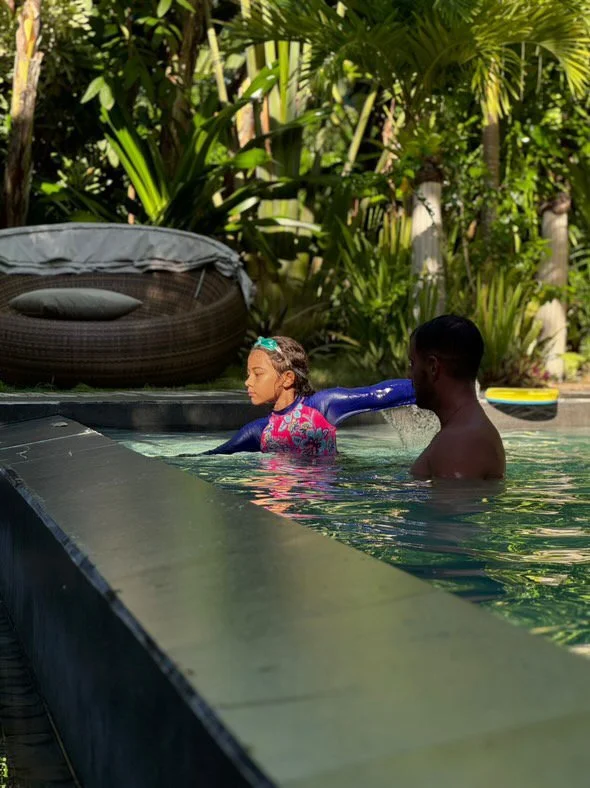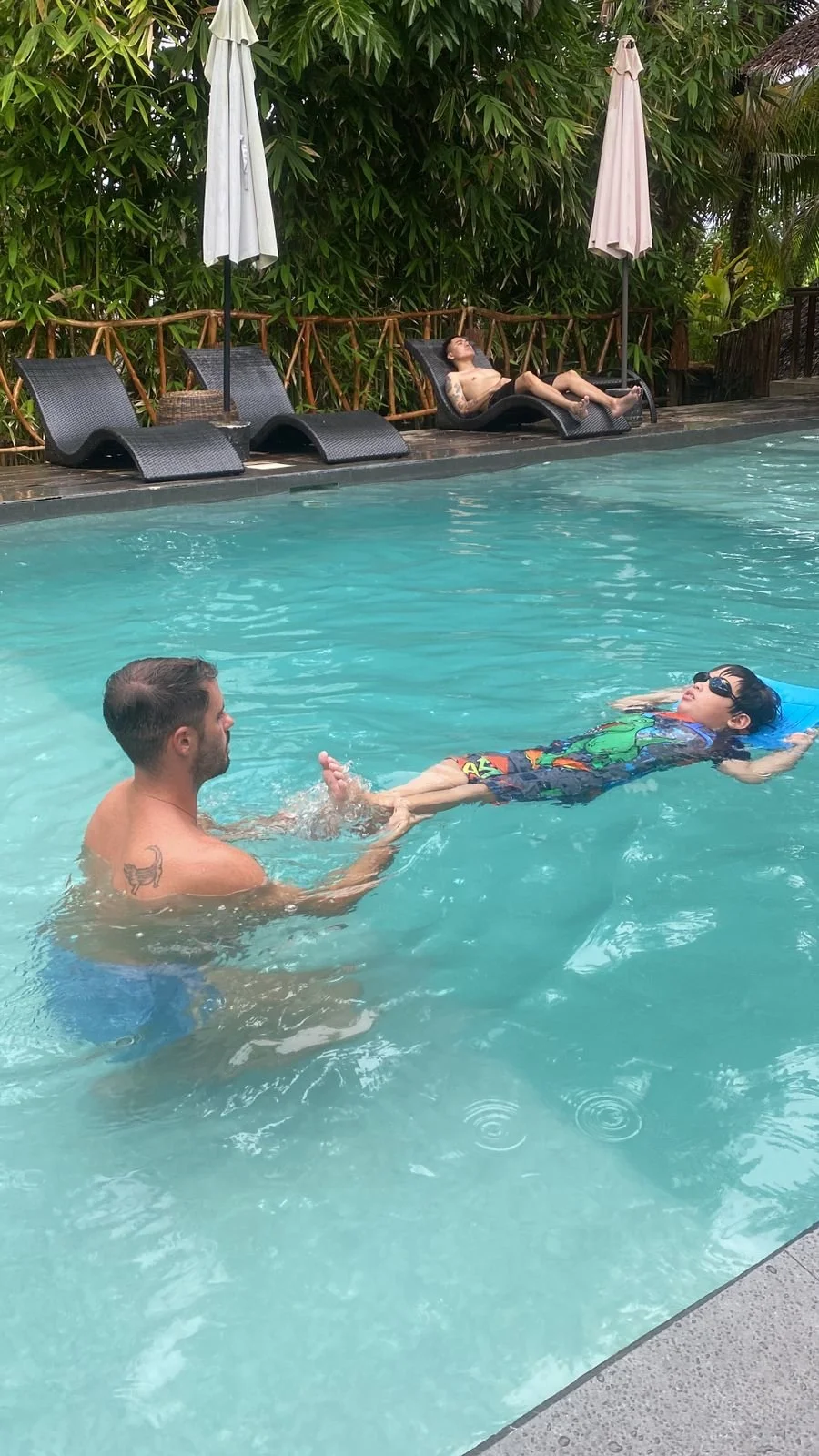5 Critical Swimming Mistakes Beginners Make (+ How to Fix Them Fast) | 2025 Guide
Introduction
Learning to swim as an adult can feel like conquering Mount Everest in flip-flops. Whether you're preparing for a functional training retreat that combines swimming, surfing, and land-based exercises, or simply want to feel confident in the water, avoiding common beginner mistakes can accelerate your progress dramatically.
The truth is, most swimming struggles aren't about lack of talent or being "too old" to learn. They stem from fundamental misconceptions about how the human body moves through water. While swimming might look effortless when you watch experienced swimmers glide through the pool, beginners often fight against the water instead of working with it.
The good news? These mistakes are entirely fixable with the right awareness and practice. Understanding these common pitfalls before you jump in can save you months of frustration and help you build the water confidence needed for more advanced activities like surfing or open-water swimming. Let's dive into the five most critical errors that keep beginners treading water instead of moving forward, and more importantly, how to fix them.
1. Fighting the Water Instead of Finding Your Float
The Mistake: New swimmers often approach the water like they're wrestling an opponent, tensing every muscle and trying to force their way through each stroke. This creates unnecessary resistance and exhaustion.
Why It Happens: On land, we use tension and force to maintain stability and move efficiently. In water, these same instincts work against us. Many beginners panic slightly when they feel the water's buoyancy, leading to muscle tension that actually makes floating and moving more difficult.
The Fix: Focus on relaxation and finding your natural buoyancy first. Practice floating on your back and front in shallow water where you can stand up easily. Learn to trust that the water will support you when you're relaxed. This foundational skill is crucial for functional training programs that combine swimming with other activities, as it builds the water confidence needed for more dynamic movements.
Quick Drill: Practice the "dead man's float" - take a deep breath, put your face in the water, and let your body naturally find its floating position. Notice how much easier it becomes when you stop fighting.
2. Breathing Like You're Running a Marathon
The Mistake: Beginners often hold their breath underwater and then gasp for air when they turn their head, creating an exhausting cycle of oxygen debt and panic breathing.
Why It Happens: The natural instinct is to hold your breath when your face goes underwater, just like when diving into a pool for fun. However, swimming requires continuous, rhythmic breathing that's completely different from land-based activities.
The Fix: Practice exhaling steadily through your nose while your face is in the water, then taking a quick breath when you turn your head to the side. This creates a natural rhythm: exhale underwater, inhale above water. Start by practicing this while holding the pool edge or walking in shallow water.
Breathing Pattern for Beginners:
Exhale slowly and steadily while face-down
Turn your head to the side (not lifting it up)
Take a quick breath
Return face to water and repeat
This rhythmic breathing technique becomes essential when you progress to more challenging activities like surfing, where breath control in dynamic water conditions is crucial.
3. Kicking from the Knees (The "Bicycle Kick")
The Mistake: Most beginners kick by bending their knees dramatically, creating what looks like riding a bicycle underwater. This generates little forward propulsion and actually creates drag.
Why It Happens: It feels natural to use the powerful muscles of your thighs and bend at the knee, similar to running or cycling movements that work well on land.
The Fix: Swimming kicks should originate from the hips with relatively straight legs and flexible ankles. Think of your legs as long whips cracking through the water rather than pistons pumping up and down.
Key Points for Proper Kicking:
Keep legs relatively straight (slight knee bend is okay)
Generate movement from the hips
Keep ankles relaxed and flexible
Kick should be about 12-18 inches deep
Focus on the upward motion as much as the downward
Practice Drill: Hold a kickboard and focus on long, fluid kicks from the hips. Your heels should just barely break the surface of the water. This hip-driven movement pattern also translates well to functional training exercises and helps build core strength.
4. Swimming with Your Head Up (Looking Where You're Going)
The Mistake: Beginners often swim with their head lifted, eyes looking forward to see where they're going. This feels safer and more natural but creates significant problems.
Why It Happens: We're used to looking where we're going when walking or running. Lifting the head seems like the logical way to navigate and feel more in control.
The Fix: Keep your head in a neutral position with your eyes looking at the bottom of the pool. Your head should be aligned with your spine, just like good posture on land. You can glance forward occasionally, but your default position should be looking down.
The Science Behind It: When you lift your head, your hips automatically sink due to the seesaw effect of body positioning in water. This creates drag and makes you work much harder. Proper head position keeps your body horizontal and streamlined.
Navigation Solution: Use the pool lane lines and count your strokes to know when you're approaching the wall, rather than constantly looking up. This skill becomes invaluable for open-water swimming and prepares you for activities where you can't always see exactly where you're going.
5. Trying to Pull Too Much Water (The Windmill Effect)
The Mistake: Beginners often reach far forward and try to grab and pull as much water as possible with each stroke, creating a windmill-like motion with their arms.
Why It Happens: It seems logical that moving more water would create more forward propulsion. The bigger the stroke, the faster you'll go, right?
The Fix: Focus on a high elbow catch and pulling the water beneath your body rather than reaching far forward. Your hand should enter the water about shoulder-width from your head, not way out in front.
Proper Stroke Technique:
Enter the water with fingertips first, thumb side down
Extend your arm forward underwater (not above)
Bend your elbow and "catch" the water beneath you
Pull through with your forearm and hand pushing water toward your feet
Finish with your hand by your thigh
Efficiency Over Power: Swimming is about efficiency and technique, not brute strength. This principle applies to all functional training - proper movement patterns always trump raw power. A smooth, technically sound stroke will always outperform a powerful but inefficient one.
Conclusion
Mastering swimming fundamentals isn't just about becoming a better swimmer - it's about building a foundation for all water-based activities and functional movement patterns. Whether you're preparing for a retreat that combines swimming, surfing, and functional training, or simply want to feel confident and capable in the water, addressing these five common mistakes will transform your experience.
Remember, every expert swimmer once struggled with these same issues. The difference is that successful swimmers learn to work with the water rather than against it. They understand that swimming is as much about relaxation and technique as it is about strength and endurance.
The skills you develop by fixing these mistakes - body awareness, breath control, efficient movement patterns, and the ability to stay calm under pressure - translate directly to surfing, functional training, and life in general. Water has a unique way of teaching us about efficiency, flow, and the power of technique over force.
Ready to make the leap? Don't let these common mistakes keep you on the sidelines of your next adventure. Whether you're considering a functional training retreat or simply want to add swimming to your fitness routine, start with these fundamentals. Book a few lessons with a qualified instructor, practice these corrections in shallow water, and remember - every lap is progress. Your future self (and your surfboard) will thank you for building a solid foundation in the water.
The ocean is waiting, and now you have the tools to meet it with confidence.



